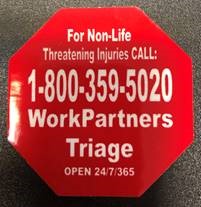Think of some excuse you have used (or heard others use) for not wearing your eye protection: they are not comfortable; they are dirty; they fogged up, you were going to be doing a hazardous task for just a few seconds and did not want to stop and put them on . . .
While you may think some or all of these excuses sound like good reasons for not wearing your safety glasses or goggles at work, consider what could happen if an accident occurred and injured one or both of your eyes. Is it worth risking injury, or even blindness, for any one of those reasons? Absolutely not!
OSHA’s standards for eye protection are intended to help prevent accidents that can lead to serious injuries, up to including blindness, caused by a variety of hazards. These hazards include flying particles (such as those present when cutting, chipping, drilling, grinding, brushing, and blowing with compressed air), molten metal (torch cutting, welding, brazing), liquid chemicals (mixing, cleaning, measuring), acids or caustic liquids (applying cleaners, filling batteries), chemical gases or vapors (cleaning, mixing, spraying, heating), or potentially injurious light radiation (welding, cutting, brazing, lasers).
Here are some of the major requirements of the OSHA standards for eye and face protection that help protect you and me:
All eye and face protection devices, such as safety glasses, goggles, and face shields must be marked that they meet or exceed the test requirements of ANSI Z87.1-1989. The marking is typically located somewhere on the frame of the glasses or goggles.
Safety glasses used to protect workers from flying objects must also have side protectors built into the design, or attachable side shields that meet the above referenced ANSI standard, to prevent objects and particles from injuring your eyes from the sides. Flimsy “slide-on” side shields are not acceptable substitutes.
Workers needing corrective lenses must either wear approved safety glasses with prescription lenses and frames that meet or exceed the above-referenced ANSI standard, or wear approved goggles designed to be worn over their regular prescription glasses that meet the ANSI standard.
If you are unsure whether or not your safety glasses or goggles are the proper type, or if they are ever damaged or lost, please report to your supervisor at once so we can take appropriate action where needed. Because as we discussed earlier, you could be injured, or even lose your sight, in the blink of an eye!


